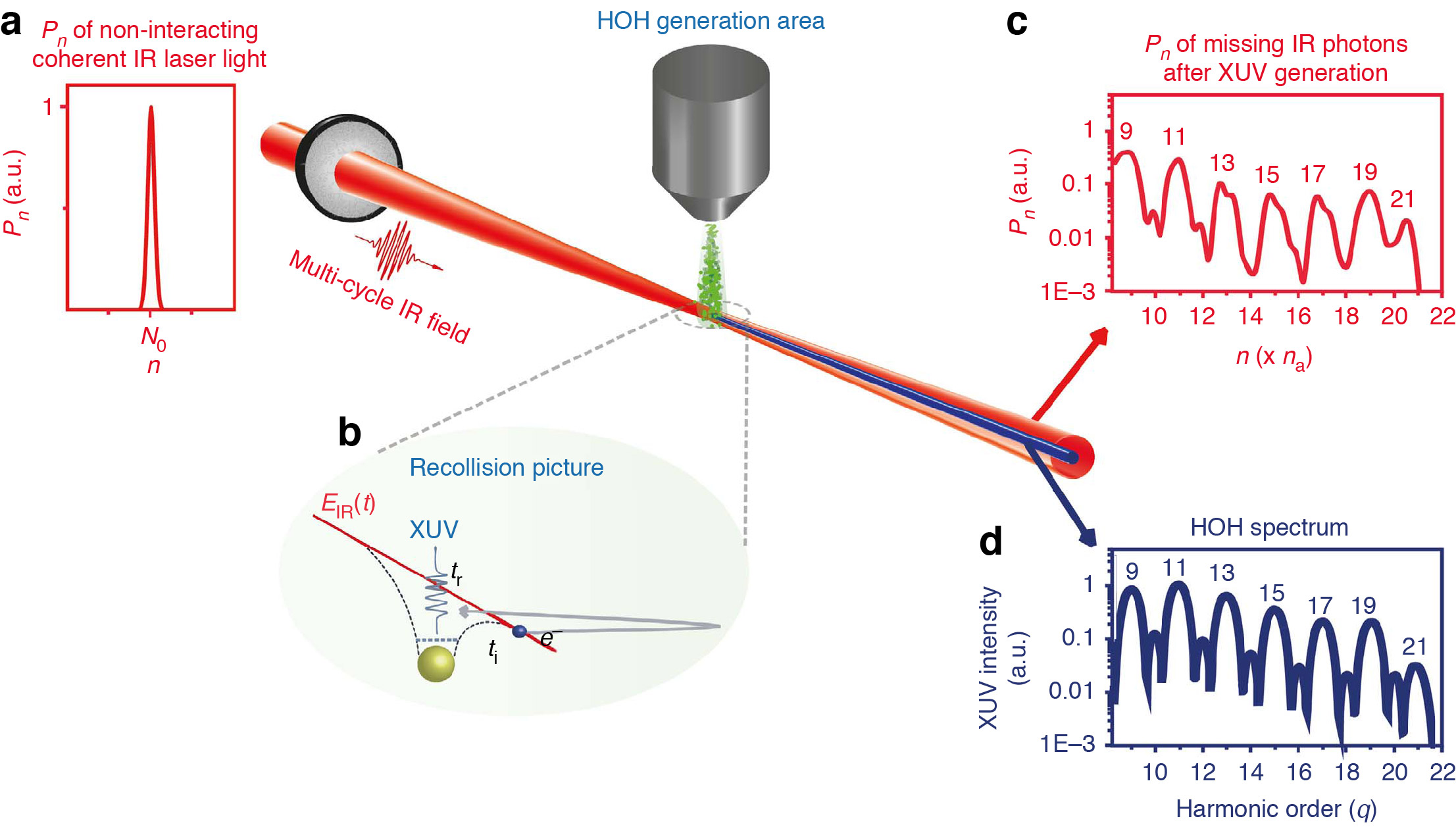Influence of the high-order-harmonic generation process on the driving laser photon statistics
The physics of ultra-short laser pulses and quantum optics have been two major research directions of modern atomic, molecular and optical physics, which developed rapidly and independently in recent decades. This is largely because, on the one hand ultra-short laser pulses use intense light states well approximated by classical electromagnetic fields, and on the other hand quantum optics mainly deals with “quantum” light, i.e. few photon states having physical properties vastly different from classical fields.
In a recent collaboration between the Institute of Electronic Structure and Laser of the Foundation for Research and Technology, the Department of Physics of the University of Crete, and the Max Planck Institute for Microstructure Physics, the researchers N. Tsatrafyllis (PhD candidate at the Department of Physics), I. Kominis, I. Gonoskov and P. Tzallas developed a new synthesis of the two aforementioned fields. In particular, they demonstrated experimentally and theoretically that the nonlinear phenomenon of high-harmonic generation during the interaction of ultra-short laser pulses of infrared radiation with matter can be observed by measuring the properties of infrared radiation after its interaction with matter. This reveals the presence of a quantum-optical phenomenon, since the semi-classical understanding of the process took for granted that the nonlinear interaction of infrared light with matter does not leave any trace on the former. In contrast, in quantum optics two interacting systems both suffer the effects of the interaction. In their work, the researchers demonstrated that by measuring the photon statistics of infrared light (a basic tool of quantum optical analysis of light), one can extract important information about the dynamics of high-harmonic generation (i.e. the ultra-short laser pulses, the frequency of which is a multiple of the frequency of the exciting infrared light).
This work opens a novel and highly promising research direction at the interface of two cutting-edge fields, having the potential to lead to novel non-classical sources of intense and ultra-fast light, as well as new spectroscopy methods with ultra-short laser pulses.
Scientific Publication: “High-order harmonics measured by the photon statistics of the infrared driving-field exiting the atomic medium” by N. Tsatrafyllis, I. K. Kominis, I. A. Gonoskov and P. Tzallas, Nature Communications 8, 15170 (2017).





